In the early 2000s, DVDs were the primary way to watch videos. Netflix streaming launched in 2007, and the DVD player is now a technological antique.
Products, much like humans, live on borrowed time. From the moment they launch, they’re on a journey towards decline.
How this journey plays out is what marketers try to predict by using the product lifecycle as a model.
According to the classic sales curve, products go through four stages:
- Development and introduction;
- Growth;
- Maturity;
- Decline.
During introduction and growth, products rise along the curve as sales grow before reaching the peak of maturity and its eventual decline.
Whether your product follows this curve or a different path is determined by product life cycle management—the decisions you make to evolve and promote the product at every stage.
In this article, you’ll learn how to set goals at each product life cycle stage to maximize profits.
Demystifying product life cycle marketing
Your marketing strategy should adapt to each stage of your product life cycle. If it stayed the same, you’d miss out on opportunities to reach customers as your product matures.
Product life cycle marketing aligns marketing efforts with the life cycle stage of your product.
The product life cycle above is a roadmap for your product. Developed by German economist Theodore Levitt, it provides a view of how the product progresses from introduction to launch to eventual decline.
The life cycle makes it easier to visualize your product’s stage and adapt your marketing strategy as you unlock new distribution channels and marketing assets. Adaptation is the difference between accelerating the curve and becoming obsolete.
For example, focus on building awareness and generating demand if your product is in the introduction phase. If you’re in the maturity phase, leverage your brand equity to lure customers away from the competition.
Smart Insights’ RACE (Reach, Act, Convert, Engage) Framework life cycle marketing model shows how marketing efforts might evolve in line with the classic sales curve.

While this curve makes the product life cycle easy to illustrate, it rarely translates to reality.
Your product’s life cycle will be unlike previous iterations or rival products. Which is why, as Derek Gleason points out:
“The goal of product lifecycle marketing is not to match the curve but to outline what may work best now and plan for the future.”
Leverage previous product life cycles to gain a broad understanding of how your product fits into the life cycles of products in its class. This will help you spot early signs of a pending transition to a new stage and avoid pitfalls (e.g., waiting too long to get out of the introduction stage).
That said, for them to be of use, your product must first gain attention and demand. And this isn’t always easy. Of the approximately 30,000 products launched every year, many will fail.
Hitting the ground running: Product development & market introduction
The development stage and introduction stage are rarely profitable. Even Facebook didn’t net positive until year three. New products are unlikely to be their most optimized selves. Development and promotion costs will also outweigh sales.
Your goal is to progress from introduction to growth as quickly as possible to start turning a profit.
Your marketing objectives for the introduction stage of the product life cycle are to:
- Get internal buy-in;
- Generate product awareness.
People must start discovering your product, why it exists, and why they should buy it. Your teams must be able to communicate this messaging.
Achieving this starts with customer and competitive research.
You should already know your ideal customer from work done by product marketing and development teams.
Use this to establish customer goals and pain points. Use qualitative research methods like surveys and interviews to find out how customers are currently meeting their needs.
What are they using to help themselves? What are they not using? Look for gaps in the market that product marketing can exploit to differentiate your product.
Use these insights to fuel your competitive intelligence and discover how customers perceive your rivals.
In his course on intelligence and market research, Andy McCotter-Bicknell, Head of Competitive Intel at ClickUp, lists three questions you should seek to answer about competitors:
- How do they position themselves?
- Who typically buys their product?
- What do customers think of it?
Gather these insights by:
Make your marketing consistent by refining your product messaging.
Secure internal buy-in with pre-launch documentation for sales teams
To convert customers, your team needs clarity and belief in what they’re selling. Pre-launch documentation ensures everyone is on the same page before you begin pushing your product.
Document product benefits and how it’s different from your competitors.
There are several ways to do this:
- Sales messaging guide;
- Internal press release;
- User manual, or;
- FAQ guide.
Develop your document from the customer’s perspective. Consider how they’ll perceive the product and the value they’ll get. Customers are much less interested in you than they are in themselves.
Keep your marketing consistent with clear messaging guidelines
To generate awareness quickly, target your audience across multiple channels (e.g., social media, PR, paid media). Your message must continually drive home the benefits of your product for customers to remember it.
In his book “Successful Advertising,” Thomas Smith suggests that people need to see a message 20 times before it sticks:
“The 1st time people look at ad, they don’t see it.
The 2nd time, they don’t notice it.
The 3rd time, they are aware that it is there.
The 4th time, they have a fleeting sense that they’ve seen it before.
The 5th time, they actually read the ad.
The 6th time, they thumb their nose at it.
The 7th time, they get a little irritated with it.
The 8th time, they think, ‘Here’s that confounded ad again.’
The 9th time, they wonder if they’re missing out on something.
The 10th time, they ask their friends or neighbors if they’ve tried it.
The 11th time, they wonder how the company is paying for all these ads.
The 12th time, they start to think that it must be a good product.
The 13th time, they start to feel the product has value.
The 14th time, they start to feel like they’ve wanted a product like this for a long time.
The 15th time, they start to yearn for it because they can’t afford to buy it.
The 16th time, they accept the fact that they will buy it sometime in the future.
The 17th time, they make a commitment to buy the product.
The 18th time, they curse their poverty because they can’t buy this terrific product.
The 19th time, they count their money very carefully.
The 20th time prospects see the ad, they buy what it is offering.” [via The Financial Brand]
More recent studies put the number at seven. Either way, it’s more than once, which is why consistent messaging is key.
To keep marketing unified, develop messaging guidelines. This playbook should include your:
Here’s the contents of Skype’s brand book as an example:
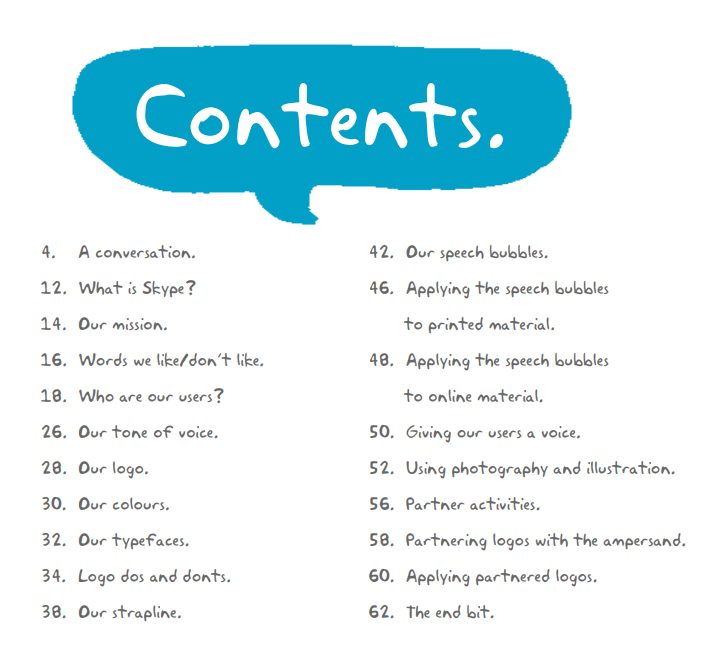
Reading this, marketing teams (whether in-house or external) get a clear idea of how to talk about and present the brand online. This ensures the messaging customers see is the same at every touchpoint and interaction.
Ramp up excitement with a go-to-market strategy
With aligned teams and consistent messaging, start generating awareness and encouraging early adoption.
A go-to-market strategy sets out how you’re going to do this and catapult your product into the growth stage.
There are three options available to you at this stage:
- Sales-led strategy. This is the best option if you aim to adopt a small number of profitable users. However, customer acquisition costs can be high.
- Marketing-led strategy. This is an efficient way to scale but relies on strong communication and data-sharing between marketing and sales. Some methods, such as PPC, can be costly in the early days.
- Product-led strategy. For SaaS companies, using a free-trial or freemium product can help scale awareness using features and usage to drive acquisition while reducing marketing outlay. It’s a strategy used successfully by the likes of Slack and Grammarly.
Your go-to-market strategy will help determine your call-to-action.
For example, if you opt for a sales-led strategy, your marketing may focus on pushing demo requests. If you opt for a marketing-led strategy, you may push for email sign-ups to nurture your audience over time. If you lead with your product, you may encourage users to take advantage of a free trial.
Basecamp’s homepage uses a product-led strategy by offering a trial:
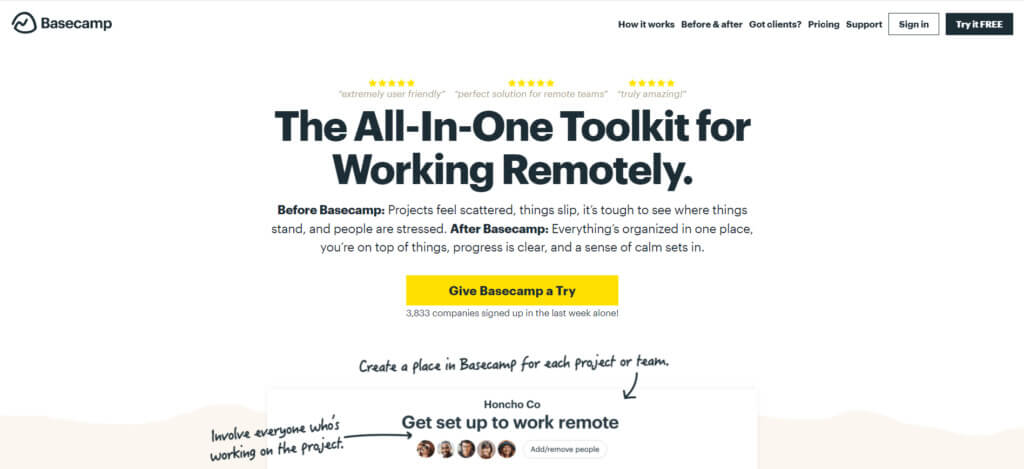
Use what you know about your market and target audience to develop a go-to-market strategy that resonates with how they use products like yours.
The growth stage: Firing on all cylinders
The growth stage of the product life cycle is the phase with the steepest increase in sales. There are two clear signs that you’re moving from introduction to growth:
- Marketing begins to move from getting customers to consider your product to getting them to prefer your brand over the competition;
- You’re considering how to push product updates to an existing customer base.
Now that your product has a foothold in the market, marketing objectives for the growth stage of the product life cycle are critical. This means:
To achieve these goals, switch your focus from marketing to customer behaviors and attitudes to customer experiences.
Leverage existing intelligence to find out how customers perceive your product. Gather qualitative user data from:
Find out how your product is helping customers solve problems, what they like and dislike about it, and what more it can do. Revisit your marketing strategy with this information:
Look again at product positioning relative to your success and competition.
Refine positioning to stamp your authority on the market
At this stage, you’ll know where your product sits in the market. This makes you well-positioned to start establishing authority.
If you boast a more advanced product than competitors, lean into its benefits. Show your customers how you fill gaps in the market that nobody else has. To do this, you’ll need to put more budget behind current campaigns on successful channels.
Use social proof to drive home the authority of your product. Product reviews can increase conversion rates by 270%. Utilizing them helped the likes of Slack and Canva achieve rapid growth.
“Social currency in the sense of our community has always been incredibly valuable for us. Much of that growth has come through word of mouth and our users sharing about us.” – Melanie Perkins, Founder and CEO of Canva [via Forbes]
Take customer data platform Segment. It built its homepage around social proof.
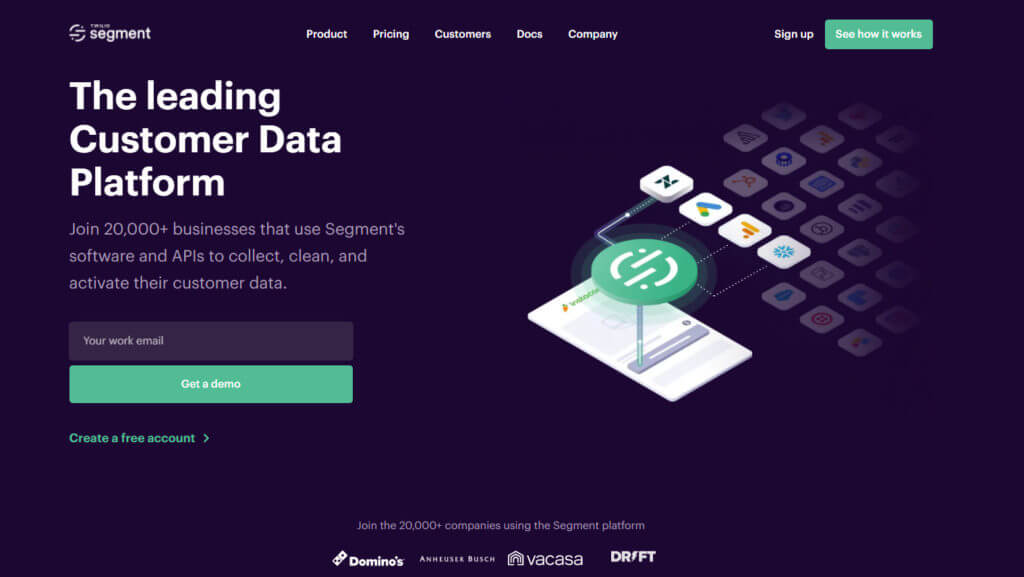
The second you land on the website, you’re immediately informed that this is a product with authority.
The headline and supporting copy position Segment as a market leader, used by big-name brands. This positioning is hammered home further down with page with a case study:

That Segment can show it’s “trusted by startups and the world’s largest companies” instills confidence in customers.
Ask customers to review your product. Incentivize them to recommend you to others. Use their feedback as a marketing tool to elevate yourself above new competitors.
Build a strong brand to stand out from the crowd
If your product development lags behind the competition, focus on brand building.
Rather than marketing around differentiation of features, branding appeals to people’s emotions and influences how they perceive your company and product.
Insurance company Lemonade, for example, is able to thrive in a market populated by institutions like State Farm and Prudential by building a fun, lovable brand.
Its founder Daniel Schreiber explains the company’s approach in a blog post:
“Insurance brands are some of the least loved and least trusted, and we came to understand that the cause is structural: every dollar your insurer pays you is a dollar less for their profits. Their interests, in other words, are profoundly conflicted with yours.
“Brands that make money by delighting their customers deserve to be loved; those that make money by disappointing customers are destined not to be. With Lemonade, we’re hoping to deliver an insurance experience that is instantaneous, un-conflicted, and downright lovable.”
Its imagery, tone of voice, and social content push Lemonade as a people-first brand—a world away from its corporate rivals:
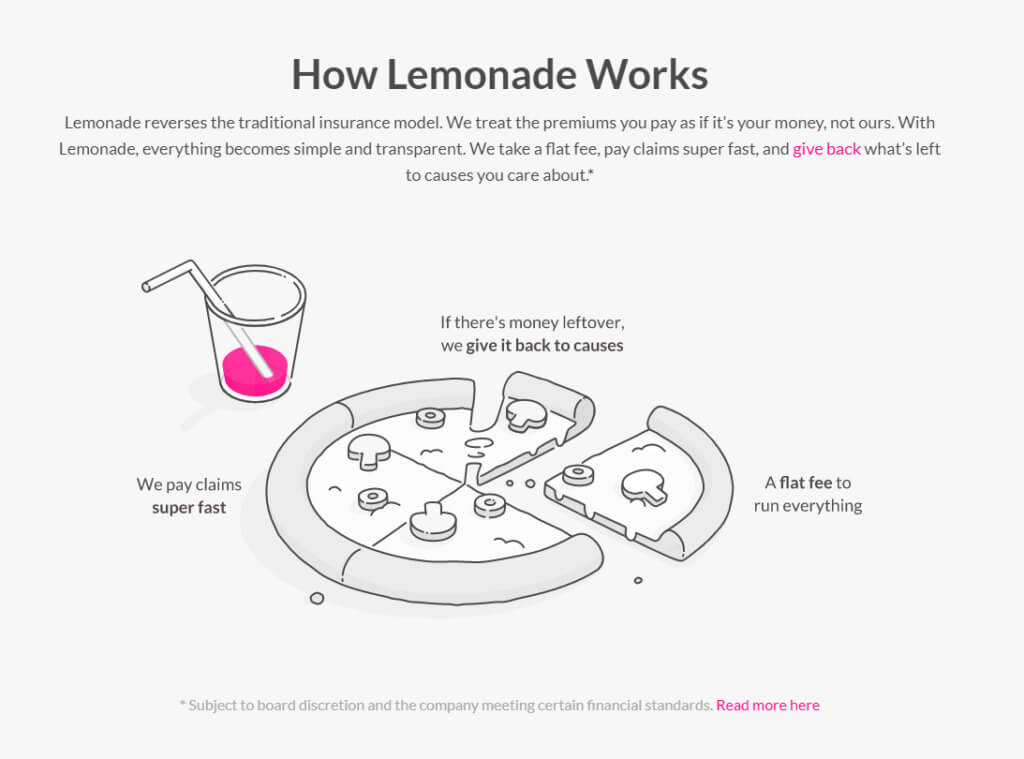
To create a strong brand marketing campaign, work on these three components:
- Fit. Target your marketing at the right audience, in the right tone of voice, where they hang out online.
- Focus. Talk about the issues and topics that are important to your audience.
- Consistency. Show up regularly to develop familiarity. Post consistently on social media and engage often with your audience across all marketing channels.
Developing a strong brand now will help grow a community that carries you through the maturity stage.
Map out how your team will handle new product updates
Data from the introduction stage will help to shape the future of your product. It will provide insight into which areas require improvement and bring to light new features you should be building.
Launching these features in the growth phase will help you to build better products going into the next stages of the product life cycle.
To market updates effectively, work with product management teams to plan in advance. Consider:
- How frequent updates will be. Regular smaller updates may only require a tweak to messaging and documentation, whereas infrequent larger updates may need a big marketing push.
- Who features will target. Do you need to create new customer personas?
- Whether features require significant marketing investment. Will updates require new content, PR, and landing pages?
In 2020, Drift launched Audiences to help marketers quantify their marketing efforts.
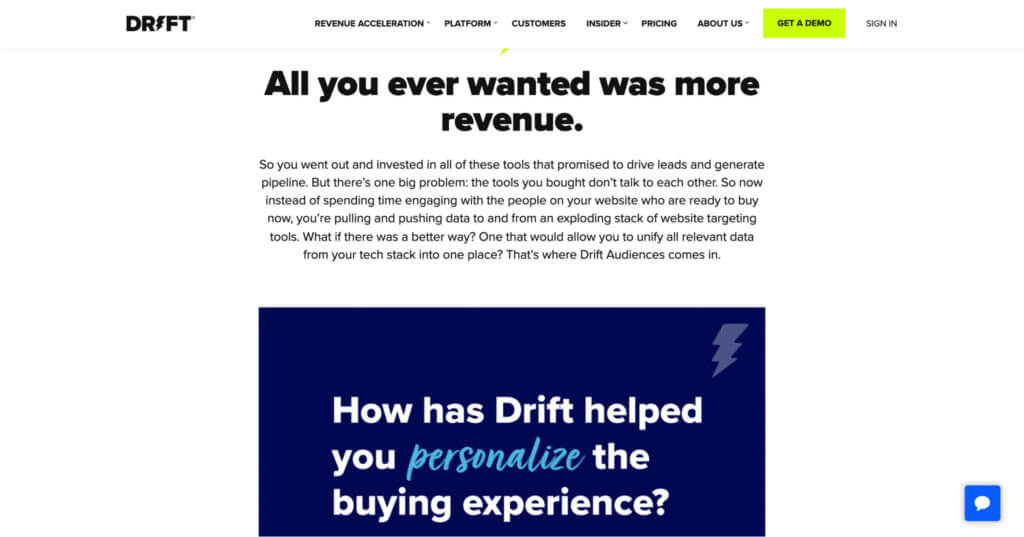
The platform talks about this new feature update as a unique product. Audiences gets its own messaging, its own strategy.
Empower sales to drive growth
The growth stage is prime for onboarding new users and penetrating new markets. As teams create new content to engage customers, update all sales documentation with information on new audiences.
Arm sales reps with fresh collateral to sell the product and maintain consistency with marketing messaging.
Reaching the peak: How to navigate the maturity phase
The maturity stage is the height of your product’s success. By now, you’ve reached the top of the growth curve.
Market saturation and competition from cheaper and more advanced rivals mean that customers in your target audience are familiar with your product class. Those who want it will either have it or a competitor’s version of it.
Therefore, the marketing objective for the maturity stage of the product life cycle is to:
Squeeze as much profit as possible out of your product while defending market share.
When the market is saturated, marketing focus often switches to enticing customers away from the competition. This is a popular tactic with mobile phone providers like Verizon:
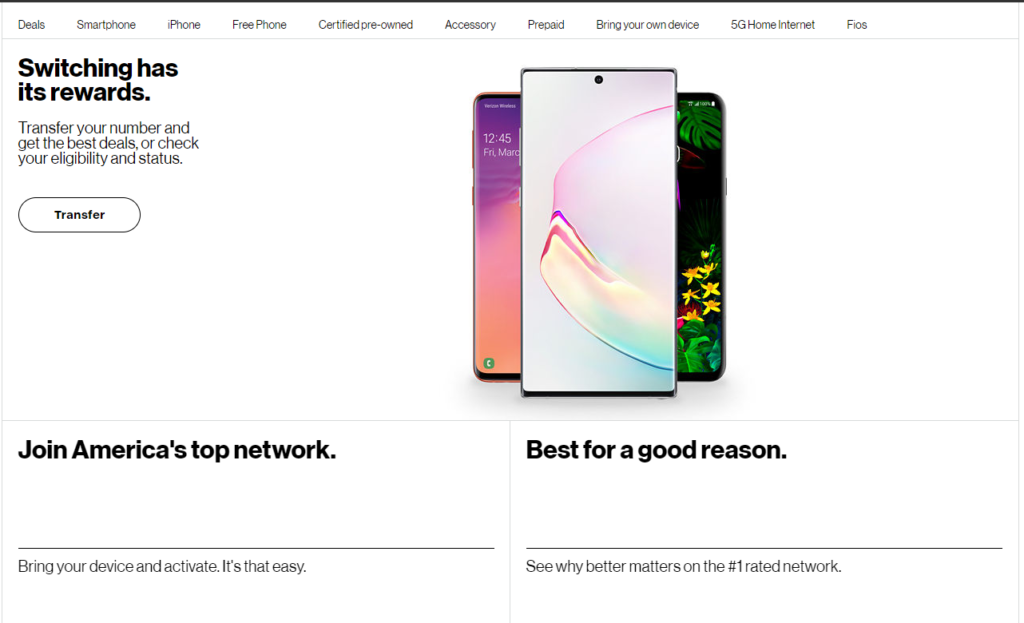
Slite does a similar thing in the B2B space, positioning its solution as an alternative for weary Slack users.
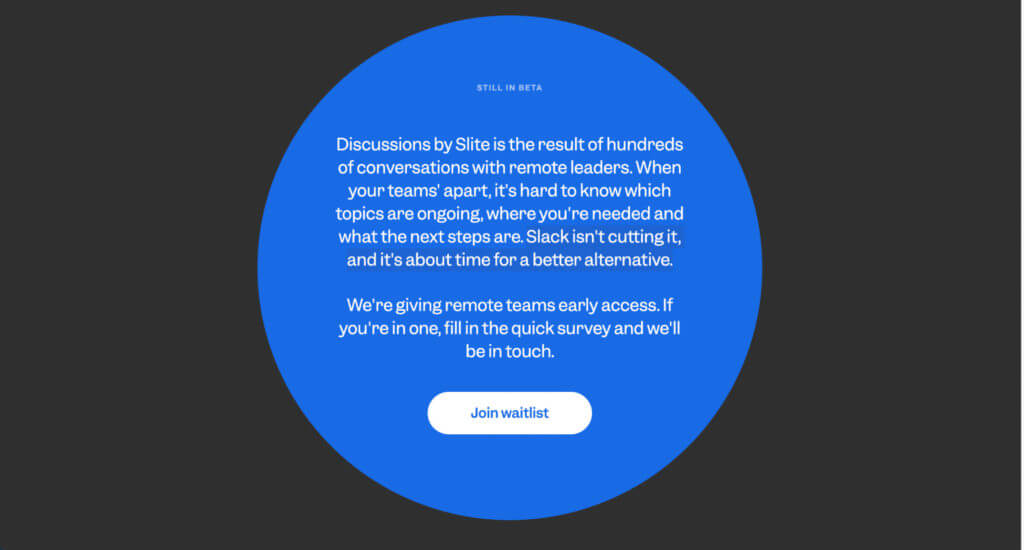
However, such tactics often rely on offering customers a better deal, lower price, or added incentives. If you’re unable to differentiate in such ways, brand becomes your biggest asset.
Thanks to the work done in the growth stage, you can use brand equity to maintain momentum. Work on nurturing your community with valuable content and rewarding customers for their loyalty.
Appealing to your customer’s emotions and making them feel valued will go a long way to retaining and turning them into advocates.
According to research by InMoment, when their needs are satisfied, 77% of customers have maintained loyal relationships with their preferred companies for ten or more years. During this time, they purchase more frequently and spend more money.
In other words, by creating loyal customers around your current product, you’re growing an audience for years to come.
To encourage brand loyalty:
While laying the groundwork for long-term success, you should also keep one eye on the market.
Invest in research to extend product profitability
A key question you need to answer in the maturity phase is: where is the market headed?
Investing in third-party market research will give you an understanding of what market segments drop off first and which customers stick around longest. It will also help identify late adopters.
Combine this research with data from sales teams to find out:
- What product features are sticking;
- What prices, upgrades, or experiences customers use to choose your product over a competitor’s.
This will help you target marketing campaigns towards your most profitable demographics to improve ROI. Data will also help shape your next steps.
Mailchimp, for example, used customer insight to evolve its product and shift marketing from email to business growth.
Its website and marketing campaigns now push people towards its all-in-one marketing platform.
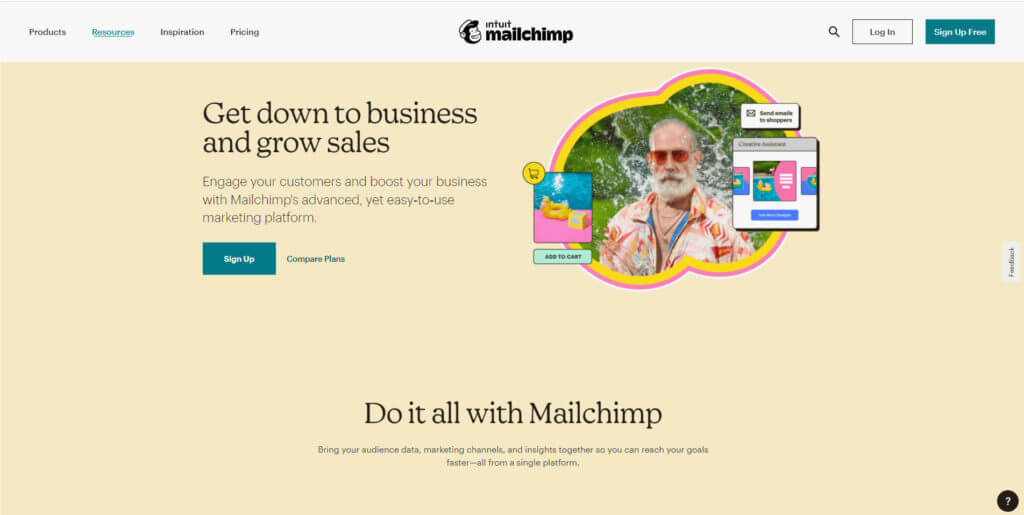
Mailchimp’s founder Ben Chestnut explained the company’s evolution in a blog post:
“Our email marketing product has helped millions of businesses grow, but our customers have been asking for years for us to build something that would enable them to do all of their marketing in one place.
Small business owners and entrepreneurs don’t have time to manage three, four, or five different platforms that each serve one specific purpose, and they don’t want their data all over the place: They need a tool powered by data and expertise that will help them know where to invest their marketing dollars.”
Research on how customers are using your product can also unearth insights for potential new uses that prolong its lifespan.
Bubble-wrap, for example, was invented as textured wallpaper. When the product began to decline, creators Al Fielding and Marc Chavannes pitched it to IBM as packaging material for its new computers.
Granted, such a significant pivot is the exception rather than the norm, but a previously unknown benefit can extend market reach and stave off decline in the short- or mid-term.
The party is over: Weathering the decline
As your product hits the decline phase, profit margins and sales volumes shrink, and lesser competitors begin to fall away, leaving only industry leaders to serve the market. While the writing’s on the wall for your product, marketing can make the fall a gradual one.
The marketing objective for the decline stage of the product life cycle is to:
Slow down decline and cut marketing costs as you develop fresh products.
It’s important to note that, like Mailchimp, innovation and development should begin during the growth and maturity phases of the product life cycle. Slowing down decline is simply a way to gain more time to refine your next offering.
Identify where to scale back marketing to reduce costs
The decline stage is the time to begin scaling back marketing.
Analyze marketing platform analytics to see which offer the best return on investment and which are low producers.
Start with the easy cuts. If a channel isn’t producing sales or customer acquisition costs are higher than customer lifetime value, it’s time for it to go.
Costs from these channels can be invested in other priorities such as product development or brand marketing.
Now is a good time to focus more on nurturing existing customers.
Creating value-led personalized content and fostering brand advocacy will mean you’re able to align marketing spend with the decline in sales and rely on brand loyalty to promote your product to late adopters.
This is known as harvesting—squeezing the last bit of profitability from a product before sunsetting it. Investopedia gives this example:
“A harvest strategy may involve the gradual elimination of a product or product line when technological advances render the product or line obsolete.
For example, companies selling stereo systems gradually eliminated sales of record turntables in favor of CD players as compact disc sales soared and record sales declined.
Also, when product sales consistently fall below the target level of sales, companies may gradually eliminate the related products from their portfolios.”
Take Coda. It nurtures existing customers with a referral program. When someone signs up for Coda using a referral link, both parties get $10 in credit.
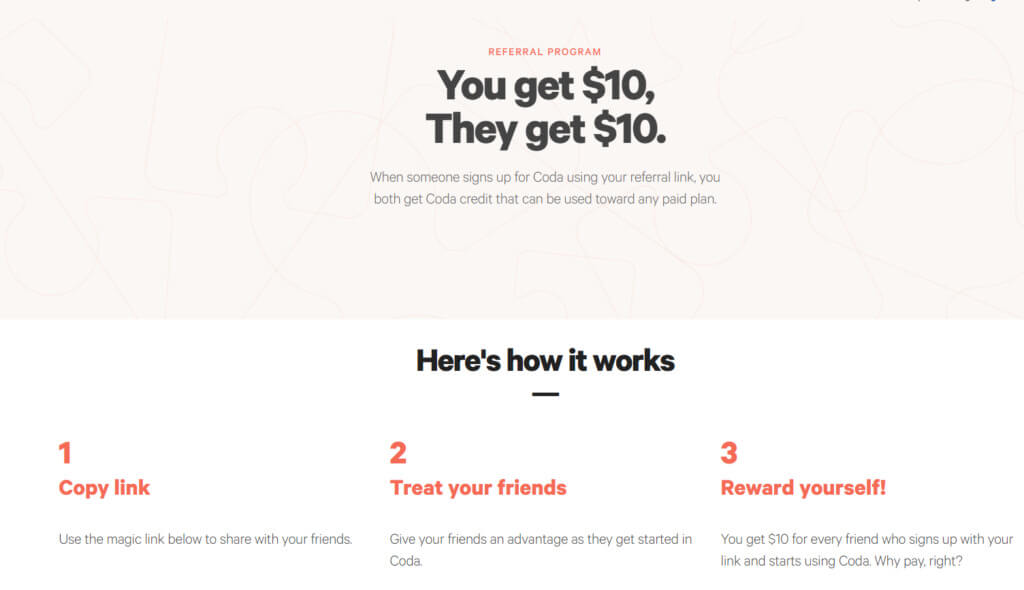
This encourages loyal customers to share the product with little marketing spend (the referral program sits on the Coda website without promotion).
It also gives Coda access to potential early adopters. Customers happy enough to tell friends about a current product are likely to be open to hearing about a new venture.
Gather customer data for future product launches
While your eyes may be firmly set on new product development, the decline phase can offer valuable insight into how to market your next product. Look at:
- Which demographics stuck around until the end;
- Which marketing tactics resonated with late adopters;
- Which customers have engaged with referral and reward marketing campaigns;
- Which customers have expressed interest in new products.
Conduct qualitative research to gather feedback and insights from customers to gauge sentiment. Learning about user experiences and brand perception will help shape positioning and messaging for your next product launch.
Conclusion
By visualizing the stages of a product journey, product life cycle management promotes a proactive approach to marketing. When you know what’s coming next, you can plan ahead to make each phase profitable. Let’s recap the goals for each phase:
- Development and introduction phase. Secure internal buy-in and generate product awareness.
- Growth phase. Widen your audience, increase market share and encourage brand preference.
- Maturity phase. Maximize profits while defending market share.
- Decline phase. Slow down decline and reduce marketing spend.
To achieve these aims, let the research guide you. Shape your early messaging and positioning based on what you know about your target audience from competitive and market research.
As you grow, tweak your marketing to match customer experiences with your product. Nurture happy customers and foster brand loyalty to manage decline and create a ready-made audience for products to come.
To master marketing across your product’s life cycle, check out CXL’s Product Marketing Minidegree.



